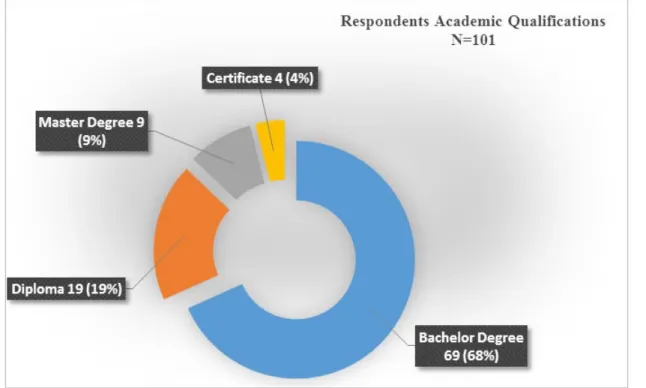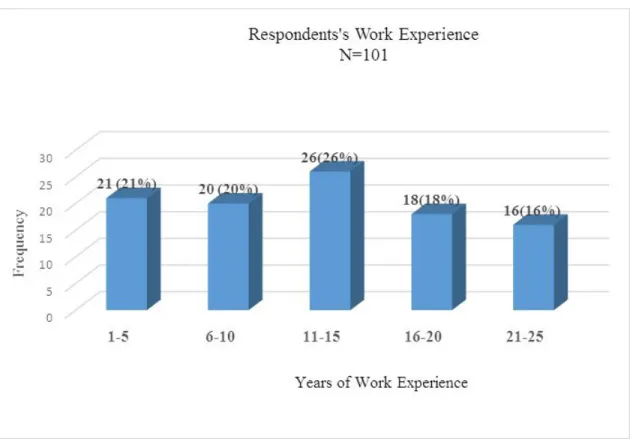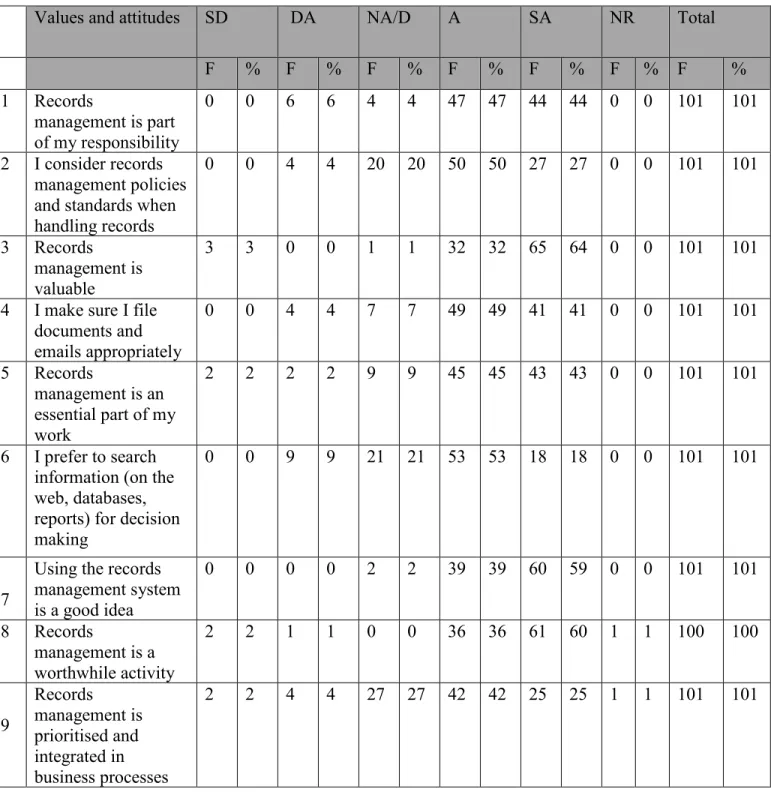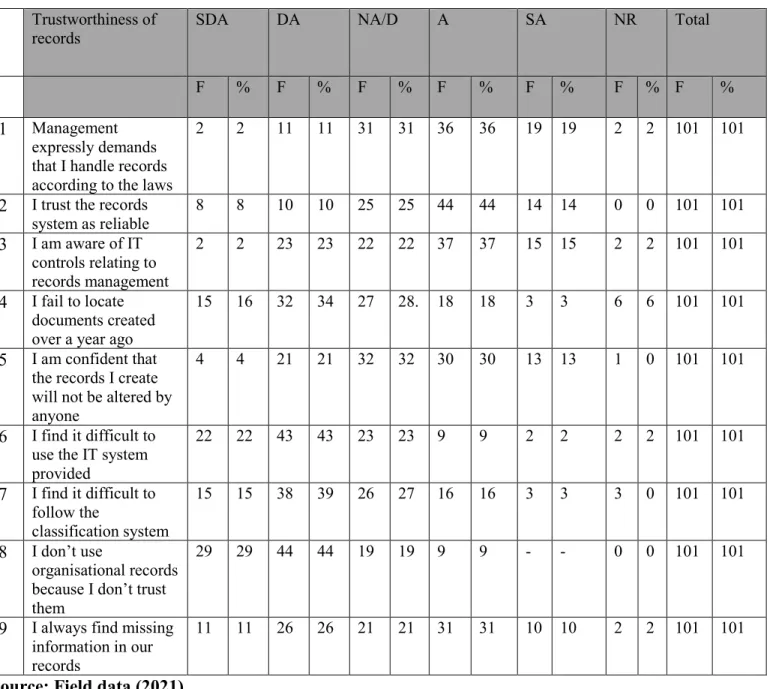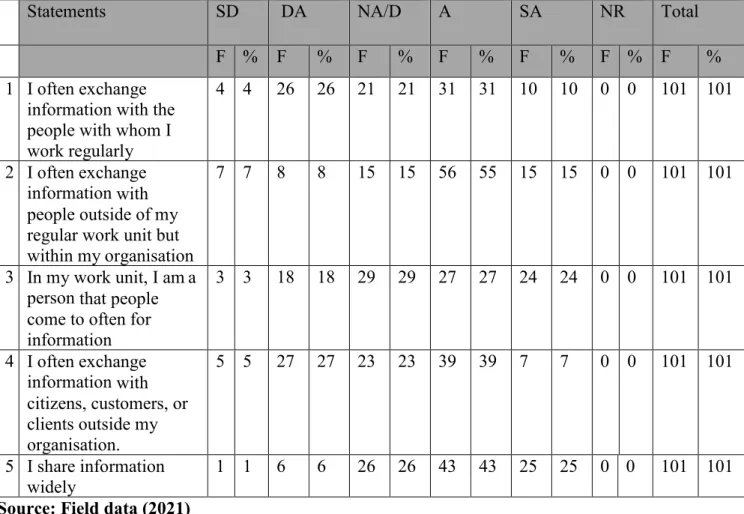While many studies have been conducted on electronic records, none have investigated Botswana's electronic records and information culture. The Information Culture Assessment Framework, the Information Culture Conceptual Framework and the Records Continuity Model were adopted for the study.
1
- Introduction
- Background to the study
- Parastatals and records management
- National frameworks – policies and legislation
- Statement of the problem
- Research objectives
- Key questions
- Scope and limitation of the study
- Significance of the study
- Overview of Theoretical framework
- Records Continuum Model
- Information Culture Assessment Framework
- Information Culture Conceptual Framework
- Overview of Research methodology and methods
- Definitions of key terms and concepts
- Information culture
- Records
- Electronic records
- Electronic records management
- Parastatals
- Structure and organisation of the study
- Summary
As outlined in chapter 4 under research design (section 4.4), the integration of the results takes place in the interpretation and discussion phase. The Information Culture Assessment Framework states that there must be "the existence of systems appropriate for the management of both electronic and paper records" (Oliver and Foscarini 2014:41).
Introduction
For example, Kemoni (2008) used both the term model and theory to refer to Records Life Cycle and Records Continuum. 19 It can be observed that the above quotes have used the terms theory and model interchangeably in the records management discipline, where the most dominant is the term model.
Use of theory in records management
20 In view of the above, it is clear that records management theory stems from different schools of thought. Thus, it is clear that the theories that can be applied in records management are diverse.
Integrated Records Management Approach
The organization argues that the approach should be customer-centric and work-integrated into records management. 22 control, which means that process, product and service control must be integrated into administrative management.
Entity Life History Model
It is observable that the application of the approach will differ depending on the context and emphasis and the application of the two contending theories may vary. Finally, the model is not in line with any of the research questions posed and is therefore not relevant to the study.
Records Life Cycle Model
Ndenje-Sichalwe (2010:67) used the Life Cycle Model to support her study because the context of the study was government ministries that create and maintain paper records. The use of the Model was consistent with the context of the study in which paper data was more dominant.
Records Continuum Model
- Studies that used the Records Continuum Model to investigate information culture31
The “create” and “record” dimensions of the Records Continuum Model are the main concepts that the research focused on. 32 The Records Continuum Model was used in the study to investigate the context of record creation and recording.
Information Culture Assessment Framework
- Studies that used the Information Culture Assessment Framework
- Applicability of the Information Culture Assessment Framework to the study
The application of the Information Culture Assessment Framework is limited to the document management discipline. The aggregation of findings across the three levels of the Framework helped solve information culture and records management issues.
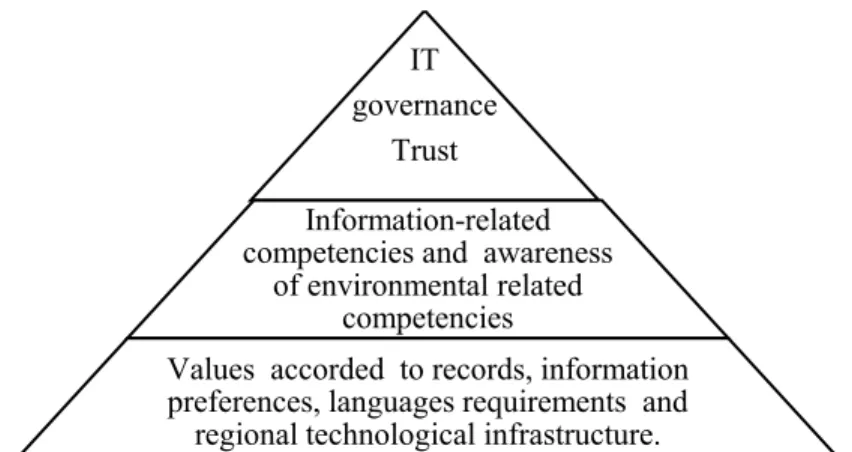
Information Culture Conceptual Framework
- Studies that used the Information Culture Conceptual Framework
- Applicability of the Information Culture Conceptual Framework to the study
The attributes of the Information Culture Conceptual Framework are capable of capturing behaviors and values that reflect the information culture in an organization. The information culture conceptual framework informs the quantitative aspect of the research by providing variables (information integrity, formality, control, transparency, sharing, and proactivity) that were used to determine the information cultures that exist in the selected parastatals.
Summary
Reliability – the record can be relied upon as a complete and accurate representation of the transactions it certifies and can be relied upon in the course of subsequent transactions. Asked if they agree with the statement "Requirements for records management are a barrier to working effectively", the majority of respondents, 69 (68%) disagreed with the statement.
Introduction
A literature review expresses personal views on the nature of a topic and how it will be researched (Hartas 2015). Leedy and Ormrod (2009:33) argue that a literature review “allows the researcher to develop a clear understanding of the research topic; to find out what has already been researched on the subject'.
Parastatals in sub-Saharan Africa
Backward snowballing was also used in that the researcher read through the reference lists of studies to identify other relevant authors. The review then turns to the concept of information culture and concludes with an outline of the relationship between data and information culture.
Parastatals in Botswana
46 From the above, it is evident that parastatals in Botswana face challenges when it comes to record keeping. The present study thus contributes to existing knowledge on record keeping and parastatals in the context of Botswana and the Southern African region as a whole.
Emergence of electronic records
These initiatives have made a significant contribution to the advancement of the fields of archives and data management. The difficulties of electronic data management are not only the result of the problem of policy implementation, but organizations have adopted new technologies with little regard for data capabilities (Adam 2007).
Trends in electronic records and information culture
The author concluded that Swedish municipalities have an immature information culture and an anarchistic information model. Like the studies discussed above, the current study was also interested in investigating the impact of information culture on document management.
Electronic records management in developed countries
The studies by Svärd (2014) and Oliver and Foscarini (2014) were qualitative, whereas the present study used a mixed method. Therefore, the current study determined ERM issues from the information culture perspective that, as outlined, seem to be missing from the records management discourse.
Electronic records management in developing countries
Consequently, there was a need for the present study to bring a different perspective regarding electronic records and related problems. The current study brought out the perspectives and experiences of a developing country regarding electronic data and information culture.
Electronic records management in sub-Saharan Africa
Developing an infrastructure to address the legal, technological and standards issues with the involvement of many stakeholders is crucial in the implementation of electronic records. The studies reviewed indicate that the challenges relating to electronic records are universal rather than simply dependent on the nature of the country.
Electronic records management in Botswana
Although the above studies have established the records management landscape in Botswana, the extent to which information culture influences ERM systems in the country has yet to be assessed. Therefore, the current review found that there is a gap in the literature on how information culture affects records management in the Botswana context.
Typology of information culture
The current review found that other types of information cultures do not relate to the Information Culture Conceptual Framework used in the study. This study, as noted, attempted to define the characteristics of information culture in the context of data management.
Information culture and the creation and capture of electronic records
- Electronic records creation and capturing in Botswana
The literature dealing with the creation and capture of data fails to address the influence of people on processes. The problem of creating and capturing data seems to be rampant among government bodies.
Information culture, attitudes and behaviours
Moatlhodi and Kalusopa (2016) assessed the readiness of electronic records in the Ministry of Labor and Interior in light of the above system. The main argument of the author was that the values we attribute to information and the attitude towards it prove the information culture.
Trustworthiness of the records keeping systems
- Trust in records keeping and information culture
- Trust in records keeping in Botswana
There is a need for all key stakeholders to understand the role of data management in the organization. The InterPARES Trust (2018) recognizes that legislation is important in controlling human activity and encourages trust in data management.
Electronic records characteristics
- Electronic document management systems (EDMS)
- Enterprise content management systems (ECMSs)
- Electronic records management systems (ERMSs)
- Electronic document and records management systems (EDRMSs)
An ERMS improves the retrieval and placement of electronic data in its repository based on accepted principles. The integration resulted from the technical report ANSI/AIIM/ARMA TR48-2006 Revised Framework for the Integration of Electronic Document Management Systems and Electronic Records Management Systems (Franks 2013).
Concept of information culture
- Information culture attributes
77 Hansen and Widen (2017) claim that information culture affects how information is used and accessed in an organization. Curry and Moore (2003) reiterate that there are common characteristics, namely values, assumptions and beliefs, that tend to be an inherent part of information culture.
Nexus between records and information culture
Franks (2013:44) argues that "information is seen as either a genus of which records are species or a whole of which records are a part". Yeo (2018) states that the UK government describes information as material from which records are made.
Summary
Creswell suggests that the researchers "take data, analyses, interpretations, and conclusions back to the participants so they can judge the accuracy and credibility of the account." The researcher sent narrative descriptions from the interviews to the study participants for member checking. Unlike respondent 001, respondent 002 (who was in the same organization) argued that: “The function of records in the organization is not set up properly, in my opinion it is set up as a structural requirement, with very little appreciation for the value process , beyond the structure”.
Introduction
The chapter presents the research paradigm, research approach, design of the study, population, sampling technique, data collection methods and data analysis. Cohen, Manion and Morrison (2007) claim that the methodology is the philosophical framework within which the research is carried out or the foundation on which it is based.
Research paradigm
- Pragmatism
- Constructivism
- Transformative/Critical theory
- Positivism
- Post-positivism
McChesney and Aldridge argue that "the stance of a single paradigm offers scope for more diverse and purposeful selection and integration of paradigms and methods in order to suit the aims of particular studies". Panhwar, Ansari and Shah Panhwar (2017:54) assert that "It is a flexible perspective that allows the researcher to use multiple methods to conduct the research according to the nature of the research questions".
Qualitative and quantitative research approaches
This would help the researcher understand participants' attitudes and behaviors toward records. However, the qualitative approach is considered inadequate due to the emphasis placed on the researcher's interpretation, which can cause bias.
Mixed methods approach
A mixed-method researcher must write in a way that quantitative and qualitative components of research are mutually illuminating” (Bryman 2007:24). Kalusopa (2011) warns that authorities have warned against vaguely combining quantitative and qualitative approaches and calling it mixed methods.
Research design
- Survey
The purpose of the triangulation protocol is to describe confirmations between the two sets of findings. A survey is one of the oldest research designs and the most commonly used design across all disciplines (Babbie 2013).
Population of the study
Sampling procedure
Probability sampling was used for the quantitative phase of the study, ie the survey. The type of non-probability sampling adopted for the qualitative phase of the study (interviews) was purposive sampling.
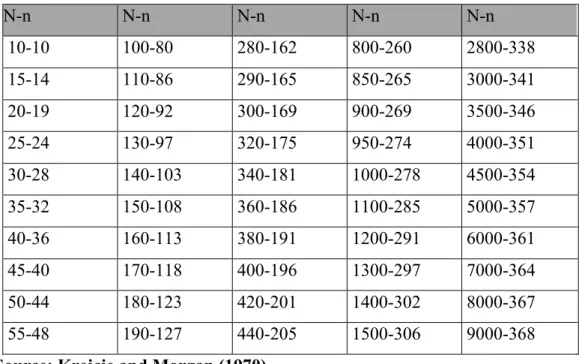
Data collection procedures
- Questionnaire
- Interview
Permission to conduct the study was sought and granted by the Office of the President (Appendix A). To establish rapport with the interviewee, the researcher began by explaining the purpose of the interview.
Reliability, validity and credibility
- Validity
- Content validity
- Pretesting
Bless, Higson-Smith, and Kagee (2007) point out that the entity should not be part of the study before testing. Peer review is when a researcher shares a study with a few experts in the research community who are interested in the study but are not part of the study.
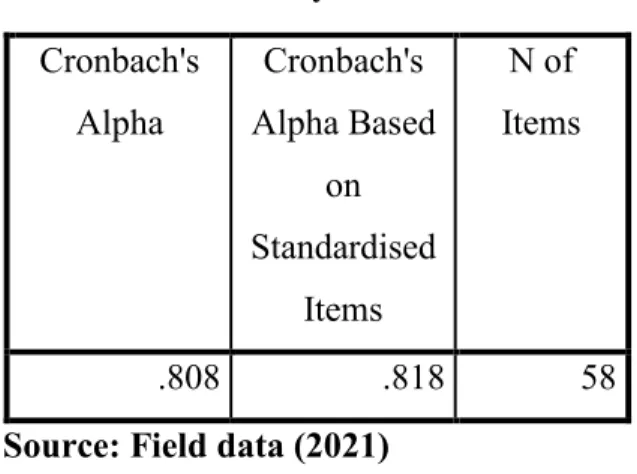
Data analysis
- Quantitative data
- Qualitative data
The screening was done to check the accuracy of the data file (was the data entered correctly?), missing data (was the data missing at random or was there a pattern?), and normality (was there a normal distribution?) . The analysis of the qualitative data in the current study was done using ATLAS.ti-9 software.
Ethical considerations
Cohen, Manion and Morrison (2007:75) assert that "researchers must find a balance between the demands placed on them to pursue the truth and the rights and values of their subject that are threatened by the research". Fidelity: study participants are informed of the researcher's commitment to any agreement or promise made with them.
Summary
Respondent 004: “The support we get from our management is insufficient for example our data staff is not enough. Information transparency – the study found that information transparency was the second best predictor with a total variance of 30.4% and showing positive standardized regression weights =.429, t=4.78, p<.001. The study proved that the information culture in ERM promotes transparency.
Introduction
The questionnaire used in the study was answered by employees from different departments of the participating parastatals who interact with the electronic record systems on a daily basis. The online interviews were conducted with records officers and representatives appointed on behalf of the CEOs of the participating parastatals.
General background
This chapter presents the findings of the online survey conducted through the REDCap platform and the findings of the online interviews using the Microsoft Teams platform.
Response rate
Presentation of results
- Demographics of respondents
- Gender
- Age range of respondents
- Academic qualifications
- Work experience
- Questionnaire results based on research questions
- Values and attitudes accorded to electronic records management
- Trustworthiness of records
- Information culture
- Information sharing
- Information transparency
- Information integrity
- Information proactiveness
- Information culture, electronic records creation and capture
- Analysis of data using multiple hierarchical linear regression
- Regression analysis model
- Summary of quantitative results
Data management is a valuable activity” 61 (60%) respondents strongly agreed, 36 (36%) agreed while one (1%) disagreed and two (2%) strongly disagreed with the statement. Thirty-three (33%) respondents agreed and 27 (27%) completely agreed with the statement "I send the data I created to the data management unit".
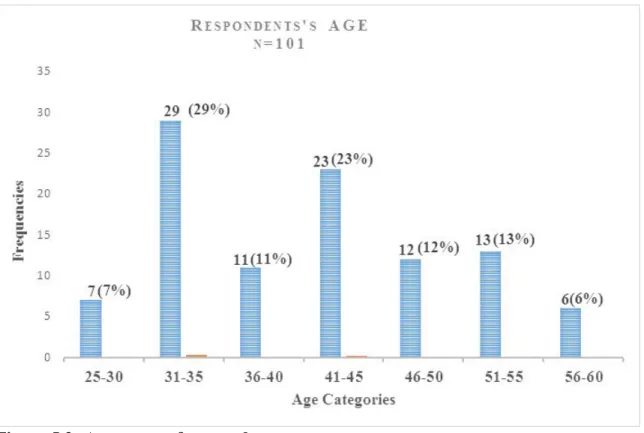
Qualitative data analysis
- Demographic profile of respondents
- Themes and sub-themes
- Information culture, records creation and capture of electronic records
- Values and attitudes accorded to records
- Trustworthiness of records
- Challenges
144 record keeping, the position of records management in the organization, members of the staff value records,. In organization C, respondents appeared to be satisfied with the record keeping position, albeit with reservations.
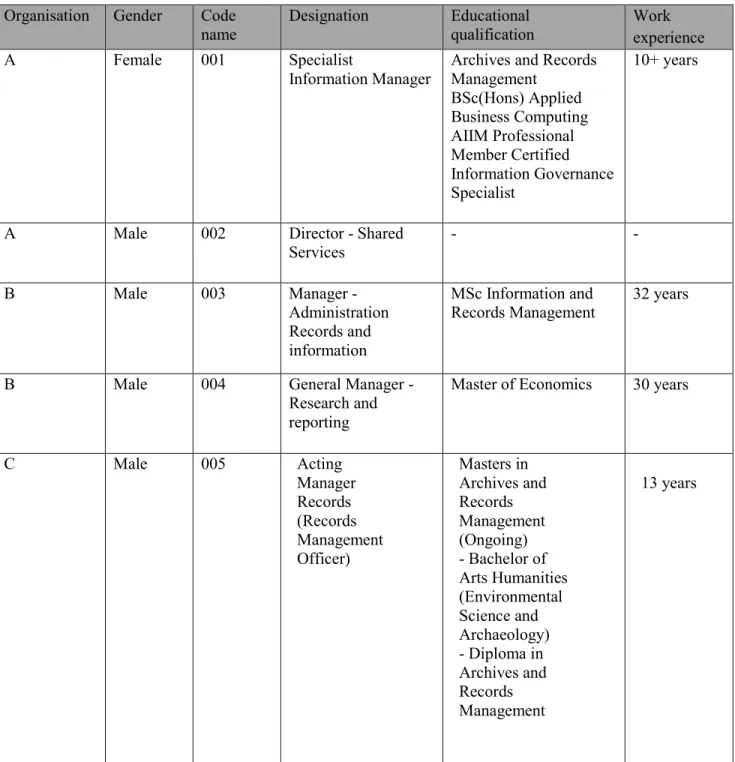
Summary
From the perspective of the information culture assessment framework, parastatals attribute positive behaviors and values to records management. From the perspective of the information culture assessment framework, the above reflects the positive values attributed to documents and document management.
Introduction
This chapter presents an interpretation and discussion of the findings of the study presented in the previous chapter (Chapter 5). The study further investigated the trustworthiness of record keeping systems in parastatals in order to understand how this shapes their organizational information culture.
Demographic characteristics of the respondents
- Gender
- Age category
- Academic qualifications
- Work experience
The challenges for people centered on their inability to follow procedures, system challenges stemmed from the failure of the systems to perform, while financial challenges included purchasing adequate records management system licenses and fully implementing records management systems. The researcher has established the "fit" of data integration, meaning that the quantitative and qualitative findings are coherent.
Information culture in Botswana parastatals
A distinctive feature of the cultures of information exchange in the three parastatals is that they are more internally oriented. The findings of the study show that the identified information cultures are information sharing, information proactiveness and information transparency.
How information culture affects the creation and capture of electronic records
- Creation and capture of electronic records metadata
- Remote electronic records capturing
- Assessment of employees’ capabilities in electronic records creation and capture
- Information culture and records creation and capture
- Information transparency
- Information sharing
- Information proactiveness
Sixty-six (65%) respondents agreed or strongly agreed to send the documents they create to a document management unit. The findings of the current study indicate that there is a significant positive relationship between information sharing and records management.
Values and attitudes towards electronic records
- Management support
- Records management position in the organisation
- Records as everybody’s responsibility
- Circumvention of records management processes
- Records as a barrier to working efficiently
Respondents from organization B expressed dissatisfaction with the position of document management in the structure of their organization. The respondent from organization C was satisfied with the position of document management in the organization, but had reservations.
Trustworthiness of records
- Ensuring availability of electronic records
- Security measures
- Records management and IT departments
In parastatal A, the respondents were of the opinion that the parastatal employees do not have absolute confidence in the administration systems. Similar findings were reported in the study by Svärd (2014), who found that the filing system was little used in a municipality where employees did not trust the system.
Challenges
The relationship was such that the perception of the employees about the reliability of the administration system was positive. While the study identified the problem, it did not identify what management in the parastatals did to influence employee perceptions of the records management systems.
Summary
Additionally, the section presents an overview of how information culture affects the creation and capture of electronic data. A culture of information sharing in parastatals promoted the effective use of electronic data and information capture.
Introduction
178 of the findings presented in this chapter are discussed and interpreted in the light of the Information Culture Assessment Framework, the Records Continuum Model and the Information Culture Conceptual Framework.
Summary of findings
- Information culture in Botswana parastatals
- How information culture affects the creation, capture and management of electronic
- Creation and capture of electronic records
- Remote electronic records capturing
- Assessment of employees’ capabilities in electronic records creation and capture
- Information culture and the creation and capture of electronic records
- Values and attitudes accorded to electronic records
- Records management position in the organisation
- Management support
- Records as everybody’s responsibility
- Circumvention of electronic records management processes
- Records as a barrier to working efficiently
- Records trustworthiness
- Ensuring availability of electronic records
- Security measures
- Records management and IT departments
Although parastatals have established procedures, creating and capturing electronic records remains a challenge. 181 The findings showed that employees have challenges in creating and capturing electronic records.
Contribution and originality of the study
Implications for theory, practice and policy
Recommendations
Suggestions for further research
Conclusion
Response from Botswana Qualification Authority

